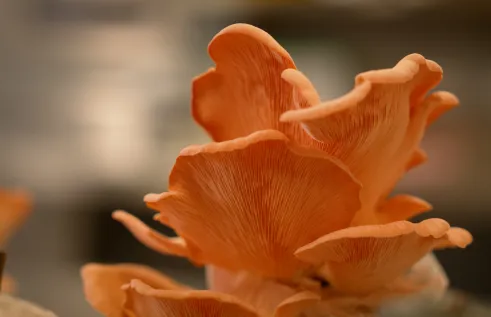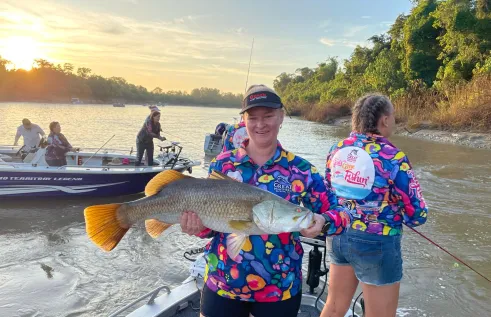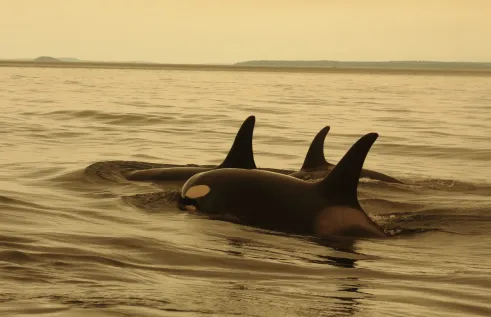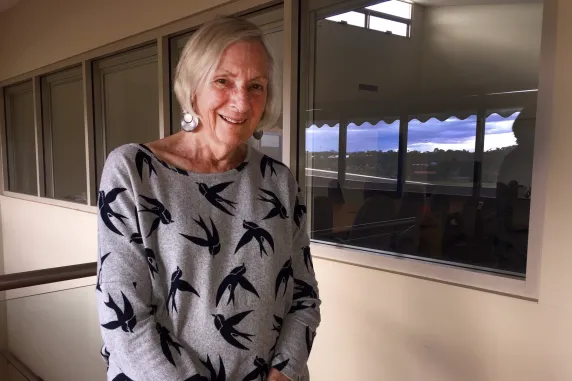News article
Ecologist links more weeds to camels
The much maligned buffel grass was not the only weed brought to arid Australia by camel, according to long-term Central Australian ecologist Dr Margaret Friedel.
In a paper published in the Australian Journal of Botany recently, Dr Friedel, who is an Adjunct Professor with Charles Darwin University’s Research Institute for the Environment and Livelihoods, said evidence suggested that at least six other species were likely to have been introduced to arid Australia by cameleers in the 19th Century.
“Camels and their harness, livestock and contaminated seed and hay were the most common vectors for accidental introduction of weeds,” Dr Friedel said.
“Buffel grass (Cenchrus ciliaris), a species introduced both accidentally and intentionally, was first recorded in the Kimberley in 1887.
“There is little doubt that it was introduced in camel harness, probably in association with camels that were imported via Port Augusta, Fremantle and other ports in Western Australia.
“Now widespread, buffel grass provides an increased fuel load that can carry a fire in areas that seldom burned. It has the potential for changing much of the rangelands, through elimination of trees and shrubs and dominance of the ground vegetation.”
In the article, titled “Unwelcome guests: a selective history of weed introductions to arid and semi-arid Australia”, Dr Friedel said many species of plants also had been introduced deliberately - for crops, pastures, gardens or for horticulture.
“The date palm was one such plant introduced for horticultural reasons. The Afghan cameleers are often associated with date palms and there is no doubt that they grew them and distributed them where they travelled, however records show that date palms were being advertised for sale in 1845, some 15 years before the first cameleers arrived.
“They subsequently became invasive at Dalhousie (SA) and Millstream Station (WA) where they had been planted in the 19th Century by the leaseholders for shade and beautification along the Fortescue River.”
Dr Friedel said that more than 27,000 species of plant had been imported into Australia since European settlement and that more than 400 of these were now part of the arid and semi-arid flora.
“My focus has been on 54 widespread alien species that have had the greatest impact - mostly environmental but also economic or social.”
Dr Friedel said a “weed” was a plant that grew in the wrong place at the wrong time.
“It is an issue that has interested me for a long time. About five years ago I was asked to co-author a chapter on weeds in arid Australia for a book about Australia’s arid zone ecology, prompting me to undertake extensive web-based search … to understand how weeds arrived here.
“Knowing the most likely pathways of introduction of invasive plants through examination of the historical record can help to prevent invasions and inform targeted management.”
Dr Friedel has achieved national and international recognition for her research on rangeland ecology and management, in a 45-year career with CSIRO in Alice Springs. She maintains a keen interest in arid Australian natural history and ecology.
“In recent times I’ve had greater freedom to write about things of human interest - as well as scientific interest,” she said.
The article is online at: W: https://www.publish.csiro.au/BT/BT20030
Related Articles

Cotton trash to treasure: Project using waste to grow new mushroom industry
Supermarket shelves could be stocked with mushrooms grown from the Northern Territory’s cotton waste, with a Charles Darwin University research project exploring the possibility of broadening the region’s agricultural industry.
Read more about Cotton trash to treasure: Project using waste to grow new mushroom industry
Stereotypes holding back Australia’s recreational fishing future, new study finds
Outdated stereotypes about who a “real fisher” is could be costing Australia’s recreational fishing industry valuable talent, creativity, and growth, new research from Charles Darwin University suggests.
Read more about Stereotypes holding back Australia’s recreational fishing future, new study finds
Global body adopts policy to protect Earth’s old, wise and large animals
The International Union for Conservation of Nature (IUCN) has recognised Charles Darwin University-led research into the Earth’s oldest animals with the adoption of the ‘Longevity Conservation’ global policy principle.
Read more about Global body adopts policy to protect Earth’s old, wise and large animals
